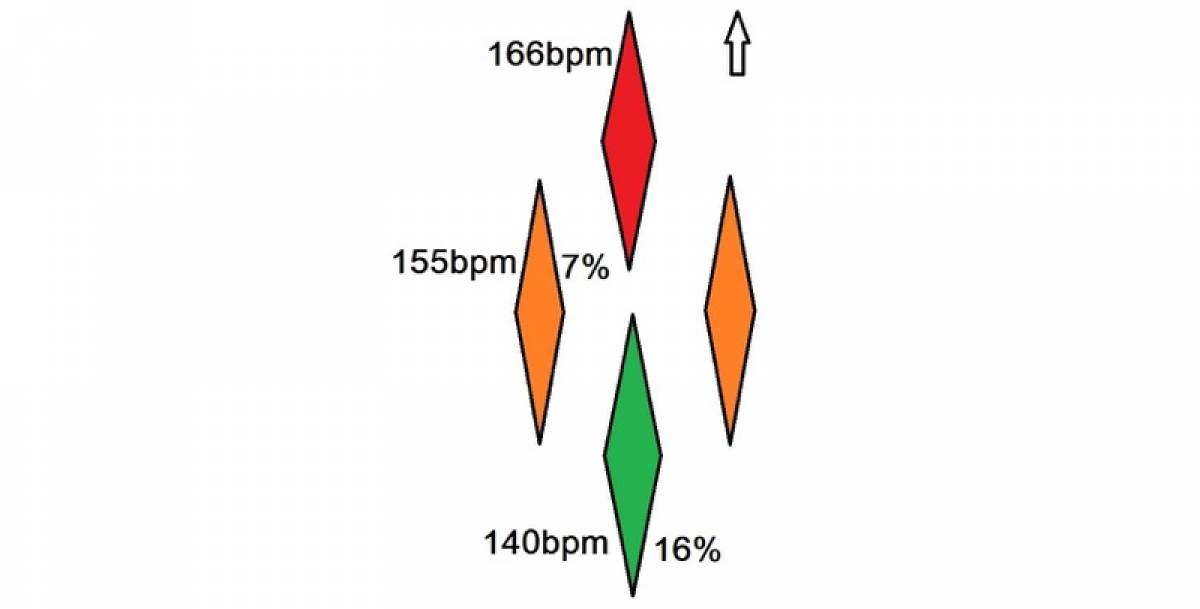Technique: Does Wash-riding Help?

[Editor: Brett McDonald wrote this from a marathon paddler's perspective, but it applies equally to the surfski world - when racing on flat water or upwind. As you'll see, wash (or slip) riding helps an enormous amount. Thanks Brett for letting us use this article!]
Wash-riding
Wash-riding (or "slipping" as it's sometimes know) is what you do when you position your boat either directly behind or to one side of a boat in front. In a similar manner to riding a bicycle in a peleton, you benefit from riding the slipstream of the person in front. Just how effective this is can be measured using your heart rate.
Paddle Group
I am fortunate to have a big group of paddlers to train with who are all able to sustain long paddles at a good pace (13 km/hr).
Once a week after doing intervals on the way out from the club over 8km, we form groups of 3-4 and each paddler then leads for 3 minutes while we sustain race pace.
If the group is only 3 the overall pace will start to drop as you don't get as much recovery.
These HR were taken from our last session in a group of 4 at a constant pace.
Heart Rate Measurements
(Refer to the diagram above)
In my case my HR was 166bpm over 3 minutes leading, 155bpm while on the side wash (a 7% drop) and only 140bpm on the diamond wash (a 16% drop in HR).
Depending on the size and weight of the boat and paddler you are washriding these savings can be much greater. (many races have team boats and singles racing together and the wash from large team boats can be a huge advantage)
Often in our sessions if someone is doing it tough and looks like dropping off, we'll tell them to stay in the diamond and that's enough for them to hang in until we get back to the club.
Practise!
The message here is practise washriding. It's a critical skill in any form of marathon racing as it enables you to perform far above what you can if paddling alone.
As for etiquette. Well that is really up to the circumstances.
Take your turn?
Much like professional cycling, paddlers expect everyone to pull their weight in the chase pack or the breakaway, but there are valid reasons not to.
If it's a large lead group, more than 4 paddlers, chances are everyone wants to be in the front 4. That's where the greatest gains are and also less risk on turns or squeezes to be dropped. For this reason there is really no expectations to take a lead, some people may be just hanging on while others will be trying to get around and reshuffle the pack to get into the front group.
If you are a group of 2-4 off the front, you may agree to work together to pull away from any chasers.
If you are a group of 2-4 in the chase pack you may agree to work together to catch the lead pack. Although at some point during the race if you are not closing the gap quickly enough you may start to think about just racing the people around you and that agreement is forgotten.
Here's where it gets tricky if you are in the lead pack or at least leading others you don't want to catch you. You may have someone in the group who decides they don't want to lead. They don't really care if other paddlers catch you because they are confident they will win any end sprint.
I've seen this happen where a group of 3 worked hard to stay away in a race while the 4th didn't lead, only to win the race.
I was in the pack chasing them. I later said to one of the young paddlers in the front pack, "Was there anyone in our group you couldn't beat in a sprint?" His answer, "No" , well I said, "Maybe next time don't feel like you have to pull the group, let the pace drop, then one of two things will happen, the paddlers not working will start working or the chase group will catch you and you have saved yourself for the end sprint".
That's what makes this sport so much fun, it doesn't just require technique, skill and fitness, but also tactics to make a winning difference.

